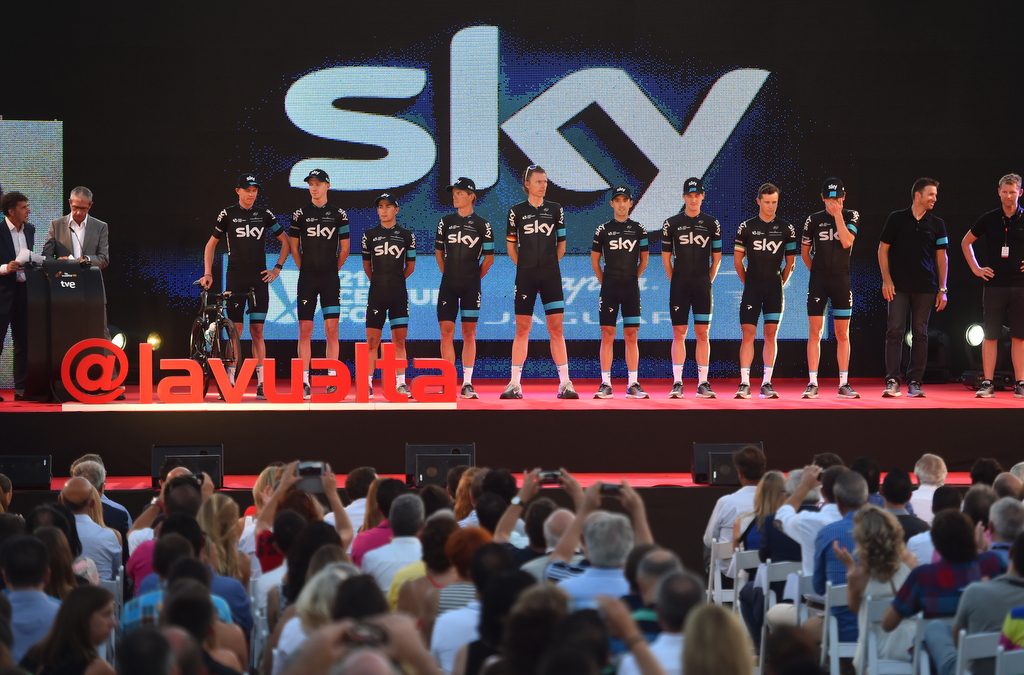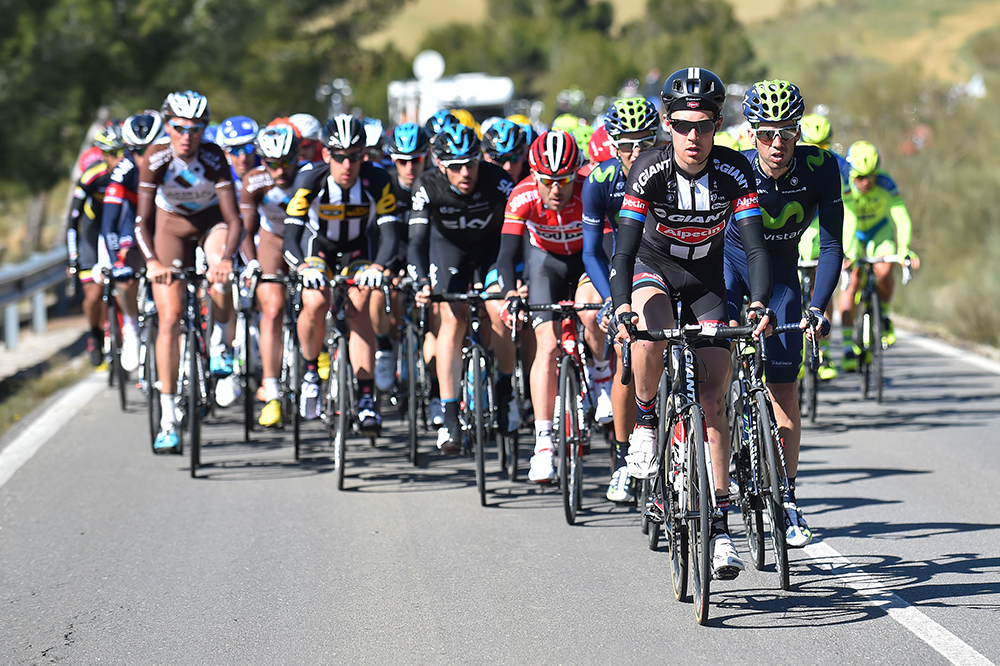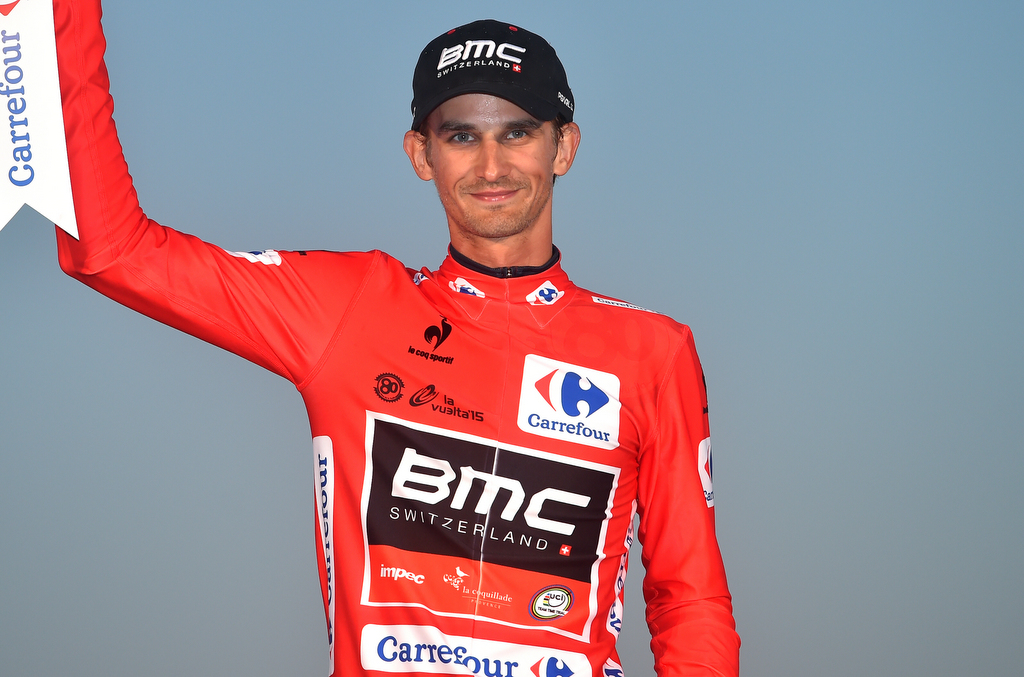Stage preview: Caminito del Rey, the Vuelta a Espana starts here
First summit finish of race set to provide serious shakeup



Less than 24 hours after the dust - and sand - has settled on the controversial stage one team time trial route of the 2015 Vuelta a España, stage two’s finish at Caminito del Rey is set to unleash the first battle in earnest for the overall.
The first summit finish of the race is ‘only’ rated as a third category climb and is just under four kilometres long. But the technical difficulty of the approach roads, combined with the hot weather, could well see the Vuelta peloton shatter before the final climb itself. The final ascent will then all but oblige the overall favourites to move to the fore in the race’s first big summit test.
The tension caused by such difficult terrain so early in the Vuelta will be heightened as a result of what is on offer, following the decision that Saturday’s times in the time trial would only count for the teams’ classification. Whoever crosses Sunday’s finish line first will therefore not only take the stage win, but also the first ‘real’ individual lead in the Vuelta, as well as - very possibly - the king of the mountains jersey.
At 158 kilometres, the stage is comparatively short. But, as if to make up for that, the undulating trek through the sierras of Malaga begins almost as soon as the stage heads inland from the coast from Alhaurin de la Torre. In total, even if the highest point of the day’s racing is just 560 metres above sea level, they will cover some 2,200 metres of vertical climbing - roughly half the climbing involved in a major mountain stage in the Tour de France.
The hardest part, in any, case starts around kilometre 52, when the peloton start a lengthy lap-and-a-half of a 102-kilometre circuit that takes them deep into the Malaga mountains, past the foot of the Caminito del Rey climb and, via the third category climb of Ardales, back out towards the coast.
When the riders then repeat the first half of the same circuit before heading onto the climb to the finish, they will therefore know only too well what to expect as they approach it: narrow, twisting, sometimes poorly surfaced roads with barely a metre of flat, which could prove a tough test of both their physical strength and bike handling skills.
The last part of the course is so narrow and inaccessible that team buses have to be parked six kilometres from the summit, next to a vast dam in a shallow canyon that forms part of a natural park.
Get The Leadout Newsletter
The latest race content, interviews, features, reviews and expert buying guides, direct to your inbox!
On the far side of the stony, bleakly beautiful valley, there is a spectacular rope and wood walkway - the recently re-opened Caminito del Rey [The King’s Pathway]. Originally built for workers in nearby hydroelectric plants to cross the gorge, the walkway will offer a dramatic backdrop as the race wends its way on a swooping road along one side of a narrow, starkly beautiful mountain pass known as the Desfiladero de los Gaitanes. But the riders, probably more concerned at not getting dropped on such technically challenging terrain, will not be paying much attention to that.
With less than four kilometres to go, the road switches left off the final circuit onto the last climb. The road drops down slightly before kicking up hard after around 500 metres, on gradients that start at around seven or eight percent slopes but they quickly switch to the first of two ‘ramps’ of some 15 percent. The ascent is short, but it will be tricky for riders to calculate their strength, as the road - much better surfaced at this point - relentlessly curves back and forth in a series of shallow, tree-lined hairpins.
Following a brief, flatter platform, with around two kilometres to go, the road steepens notably again to around 15 percent for around 100 metres. Coming just before a very hard right hand bend leads onto the finishing straight, high above a large, half-empty reservoir, this last ‘ramp’ would be ideal for a last minute attack.
Located in one of the most remote regions of inland Malaga and a far cry from the tourist traps and skyscrapers that are crammed along the coastline, when Cyclingnews visited the area on Saturday, only one rider seemed certain of support - and it wasn’t one of the most expected names.
Belgian Jasper Stuyven’s fans have been out in force painting the roadside of the climb in his support, which will certainly provide the Trek Factory Racing rider with some morale boosts on the Vuelta’s first summit finish.
The final climb of El Caminito del Rey, which reaches a dead-end at a restaurant above the reservoir, has never featured in any road-race before, although it has been used in MTB events. Curiously enough, rather than the Spaniards, though, Team Sky’s Chris Froome is one of the few riders who will know the area’s roads from recent live race action.
The last stage of the 2015 Vuelta de Andalucia, when Froome was leading and en-route to his first victory, used the approach road, if not the final climb, on the way to the finish in Alhaurin de la Torre - coincidentally where the Vuelta starts today.
Another important factor will be the high temperatures, set to reach around 35 degrees Centigrade mid-afternoon, which could well cause riders to suffer badly in the heat. For riders needing liquid refreshment, not to mention those stranded by punctures, the twisting, narrow roads will make it tough for team cars to reach them quickly - further increasing time gaps.
Having such a hard stage so early in the Vuelta is by no means a total innovation. In 2013, Nicolas Roche, Froome’s team-mate, claimed an early triumph in the Monte da Groba, a longer, steadier climb on stage two in Galicia.
However, that was the only time such a difficult final ascent has featured so early in the Vuelta in the last ten years. Two years on, the last ascent on Sunday’s stage two is not so hard as the ascent where Roche won, the difficulty of the approach roads more than make up for it - and after Saturday’s bizarre opening stage could well ensure a spectacular ‘real’ start to the Vuelta.
Alasdair Fotheringham has been reporting on cycling since 1991. He has covered every Tour de France since 1992 bar one, as well as numerous other bike races of all shapes and sizes, ranging from the Olympic Games in 2008 to the now sadly defunct Subida a Urkiola hill climb in Spain. As well as working for Cyclingnews, he has also written for The Independent, The Guardian, ProCycling, The Express and Reuters.
